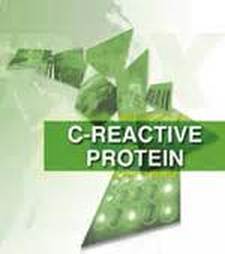
Understanding Inflammation
If you've ever jammed your finger, scraped your knee, or sprained your ankle, you're already familiar with inflammation. The accompanying redness, swelling, and pain are sure signs that inflammation is taking place. Inflammation is part of your body's response to nearly any type of physical injury. It's one of the ways that your body protects itself, and begins its repair process.
Inflammation is not always as obvious or benign as the above examples. It can silently involve every cell in your body and, over time, negatively affect your health and abilities. For example, allergies, joint pain, and premature aging are just a few of the common ailments linked to "systemic inflammation." But if you can't see inflammation, how do you measure it?
The levels of certain chemicals in your blood are known to increase with increased levels of inflammation. One of these chemical markers for inflammation is a protein called C-reactive protein (CRP). CRP is often measured in conjunction with other blood tests, and normal values are well established. From a clinical standpoint, a CRP level of less than 5 milligrams per liter of blood is considered normal. "Normal" may not be optimal, though. Many medical researchers believe that even slight elevations of CRP are tied to increased risk for heart attack, stroke, and many other diseases.
Your body creates both inflammatory and anti-inflammatory chemicals, called "prostaglandins" from nutrients in the food that you eat. Imbalances in your diet can lead to the creation of excessive amounts of inflammatory prostaglandins, which fuel your body's inflammatory response. Conversely, the consumption of certain nutrients, like omega-3 fatty acids, allows your body to produce more anti-inflammatory prostaglandins, which it uses to reduce inflammation.
Modern nutrition experts, including Andrew Weil, Nicholas Perricone, and Barry Sears, have written many books about diet's link to inflammation, and have promoted the increased consumption of omega-3 fatty acids, antioxidants, and other nutrients that help control or reduce inflammation.
..Read More: Self Nutrition Data
Anti Inflammatory Nutrition
If you've ever jammed your finger, scraped your knee, or sprained your ankle, you're already familiar with inflammation. The accompanying redness, swelling, and pain are sure signs that inflammation is taking place. Inflammation is part of your body's response to nearly any type of physical injury. It's one of the ways that your body protects itself, and begins its repair process.
Inflammation is not always as obvious or benign as the above examples. It can silently involve every cell in your body and, over time, negatively affect your health and abilities. For example, allergies, joint pain, and premature aging are just a few of the common ailments linked to "systemic inflammation." But if you can't see inflammation, how do you measure it?
The levels of certain chemicals in your blood are known to increase with increased levels of inflammation. One of these chemical markers for inflammation is a protein called C-reactive protein (CRP). CRP is often measured in conjunction with other blood tests, and normal values are well established. From a clinical standpoint, a CRP level of less than 5 milligrams per liter of blood is considered normal. "Normal" may not be optimal, though. Many medical researchers believe that even slight elevations of CRP are tied to increased risk for heart attack, stroke, and many other diseases.
Your body creates both inflammatory and anti-inflammatory chemicals, called "prostaglandins" from nutrients in the food that you eat. Imbalances in your diet can lead to the creation of excessive amounts of inflammatory prostaglandins, which fuel your body's inflammatory response. Conversely, the consumption of certain nutrients, like omega-3 fatty acids, allows your body to produce more anti-inflammatory prostaglandins, which it uses to reduce inflammation.
Modern nutrition experts, including Andrew Weil, Nicholas Perricone, and Barry Sears, have written many books about diet's link to inflammation, and have promoted the increased consumption of omega-3 fatty acids, antioxidants, and other nutrients that help control or reduce inflammation.
..Read More: Self Nutrition Data
Anti Inflammatory Nutrition
- Eat plenty of fruits and vegetables
- Minimize saturated and trans fats
- Eat a good source of omega-3 fatty acids, such as fish or fish oil supplements and walnuts.
- Watch your intake of refined carbohydrates such as pasta and white rice.
- Eat plenty of whole grains such as brown rice and bulgur wheat.
- Eat lean protein sources such as chicken; cut back on red meat and full-fat dairy foods.
- Avoid refined foods and processed foods.
- Spice it up. Ginger, curry, and other spices can have an anti-inflammatory effect